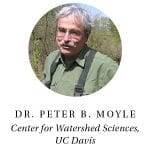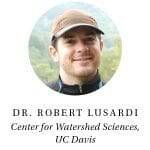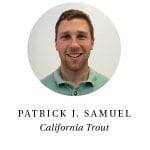THE DAM
The 100-foot-tall Rindge Dam on Malibu Creek is located in Malibu Creek State Park in the Santa Monica Mountains, about three miles upstream from Southern California’s Malibu coastline. Construction of the privately-owned, concrete dam and spillway structure was completed in 1926 on the Rindge family property and provided water for irrigation and household use in Malibu. By the 1940s, the reservoir filled entirely with sediment, and the dam was decommissioned in 1967. Shortly thereafter, the dam was integrated into Malibu Creek State Park and placed under State Park’s management.
Owner:
California Department of Parks and Recreation (State Parks)
Location:
Malibu Creek State Park in Malibu
Completion Date:
Construction completed in 1926; Decommissioned in 1967
Size:
Height: 100 ft, Total capacity: 600-acre ft completely filled with sediment
Stakeholders:
Santa Monica Mountains National Recreation Area (National Park Service), Santa Monica Mountains Resource Conservation District, City of Malibu, City of Agoura Hills, Mountains Restoration Trust, Surfrider, Army Corps of Engineers, National Marine Fisheries Service, California Department of Fish and Wildlife, U.S Fish and Wildlife Service, Ventura County, Heal the Bay, Los Angeles County, regional residents, and Las Virgenes Municipal Water District.
Land Acknowledgment
Rindge Dam is located on the traditional lands of the Pipimaram (Fernandeño Tataviam), mitsqanaq’n (Ventureño Chumash) and Tongva (Gabrielino) people.The Problem
Since its original construction in 1926, Rindge Dam has altered the geomorphic, riparian, and aesthetic character of Malibu Creek. The dam has trapped approximately 780,000 cubic yards of sediment naturally destined for the coast, where it would have supported beach and nearshore habitats. The reservoir behind Rindge Dam filled with sediment less than 30 years after its construction, and it was subsequently decommissioned in 1967. Below Rindge Dam, the lower three miles of Malibu Creek are designated critical habitat for the federally endangered steelhead. The dam blocks steelhead access to approximately 18 miles of high-quality spawning and rearing habitat in the creek and its tributaries.
Current Situation
The removal of Rindge Dam represents a unique opportunity for transformative landscape level ecological restoration in Southern California, a highly urbanized area. Due to its lack of function as a water storage facility, Rindge Dam was deemed obsolete and has been the subject of removal planning for decades. While there is little disagreement about the need to remove Rindge Dam, progress has been incremental given science and engineering complexities. The dam removal process was formalized in 1992 when the U.S. House of Representatives commissioned the Malibu Creek Ecosystem Restoration Feasibility Study, which requested a solution to improve the Malibu Creek watershed and Malibu shoreline. The U.S. Army Corps of Engineers and California Department of Parks and Recreation (State Parks) co-led this study to evaluate opportunities for ecosystem restoration that would improve aquatic and riparian habitat connectivity and restore the transportation of natural sediment back to the coast. The Locally Preferred Plan (LPP), endorsed by State Parks and stakeholders, calls for the removal of Rindge Dam, the remediation of eight upstream passage barriers, and the removal of the roughly 780,000 cubic yards sediment impounded behind the dam.
Potential for Removal
The Malibu Creek Ecosystem Restoration Study Final Integrated Feasibility Report, which was completed in November 2020 and signed by Commanding General Scott Spellmon in December 2020, called for the design phase of the project to begin in 2023. The 2021-2022 California State Budget allocated $12.5 million for California Department of Parks and Recreation (State Parks) to lead the pre-construction, design and engineering phase (PED) of this project over the next four years. This phase will include technical and natural resources studies to support dam removal, project implementation plan sets, environmental permitting, and public engagement. CalTrout is partnering with State Parks to lead communication and public outreach. The management of impounded sediment behind Rindge Dam is a particularly complex element of the project. The current PED phase will determine how best to utilize this sediment. This may include placement along Malibu shoreline and/or nearshore areas that have been starved of sediment since Rindge Dam was built. Based on the current schedule, Rindge Dam is expected to be removed by 2035. Its removal will achieve a critical species recovery action for the critically endangered Southern steelhead and revitalize healthy beaches, supporting both fish and people.
Fish Affected:
Remove the Dam, Restore the Watershed: Returning Malibu Creek to Santa Monica Bay
Read more about the work we are doing on other important dam projects
Learn More by Exploring Our StoryMap
Explore the Dams Out ArcGIS StoryMap created by our Communications Team. The StoryMap guides viewers on an interactive journey through each of the dams included in CalTrout's 2022 Top 5 Dams Out Report. Explore photos, videos, maps, and more content to learn why it is so crucial that we get these five dams out. Keep scrolling to view the StoryMap or click the button below to view the StoryMap in a new tab.





